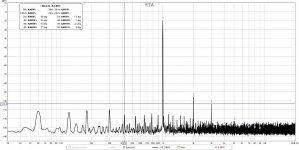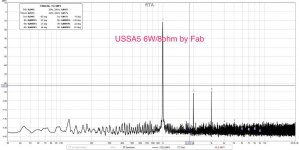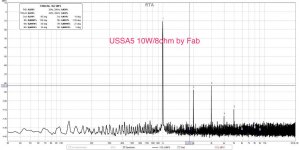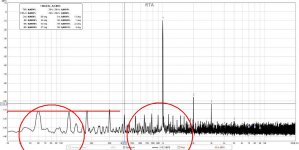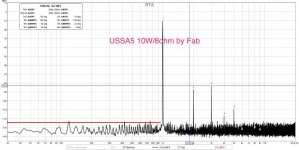All the resistor values are in the BOM.
Nice!
And where is the BOM?
Hi Luke
For the double die lateral mosfet you can check post 30 here for Exicon double die. The supplier is Profusion (official distributor) and you do not need the Exicon "-S" version since Alfet distributors did not offer that anyway. "-S" version with red or orange colour VGS grade allows a marginally higher amplifier damping factor if needed.
Fab
For the double die lateral mosfet you can check post 30 here for Exicon double die. The supplier is Profusion (official distributor) and you do not need the Exicon "-S" version since Alfet distributors did not offer that anyway. "-S" version with red or orange colour VGS grade allows a marginally higher amplifier damping factor if needed.
Fab
Inderesting,yes you are right too.
Difference in cost is small but....
The S version has been tested and graded into colour bands based on the technical spec shown below to ensure close matching. We cannot guarantee a specific colour band upon request but orders will be supplied from the same colour band. If you have a particular requirement, please contact us before ordering.
Difference in cost is small but....
The S version has been tested and graded into colour bands based on the technical spec shown below to ensure close matching. We cannot guarantee a specific colour band upon request but orders will be supplied from the same colour band. If you have a particular requirement, please contact us before ordering.
Last edited:
This is a measurement I have taken of the USSA-5 total THD at 1KHz under 1Wrms load (8 ohm). We know that the low watt power is the most important for listening.
Fab
What is your sound card?
Have you done a high watt measurement, have you done an IMD test?
What is THD at 10khz?
Nice THD profile!
Last edited:
Hi Fab, so the schematic on post 4 shows semlab devices. I assume these are no longer available and I must use Exicon ECW20N20 and ECW20P20, these have zener protection right? I checked out the profusion website and datasheets, there is no mention of S version or colors. How do I order red or orange mosfets? Price of mosfet is half by the hundred, how many pcb you got FAB
What is your sound card?
Have you done a high watt measurement, have you done an IMD test?
What is THD at 10khz?
Nice THD profile!
Hi thimios
I do not use my soundcard because not good enough and not appropriate...I use focusrite, RTA software and my IPad for sound generator.
Thanks for the profile comment! Mostly due to love feedback design...
I Will check higher watt measurement once I get home.
No IMD test.
I think I have done THD at 10kHz but since most hardware Is frequency band limited it does not show much anyway...
Fab
Last edited:
Hi LukeHi Fab, so the schematic on post 4 shows semlab devices. I assume these are no longer available and I must use Exicon ECW20N20 and ECW20P20, these have zener protection right? I checked out the profusion website and datasheets, there is no mention of S version or colors. How do I order red or orange mosfets? Price of mosfet is half by the hundred, how many pcb you got FAB
the Zener protection is done on the pcb using discrète diodes. Refer to schematics of post 4.
Check post of Ggetzoff on the first page for link to S version. S version is not mandatory at all. I have personally not used Exicon for both my USSA-3 and -5. The Alfet and Exicon datasheet parameters are identical and they have been used in the USSA amps by some members. I do not intend to include other than pcb in the group buy...but someone can start one
The list show about 40 pcbs to be ordered.
Fab
THD profile at higher power
As requested by Thimios
6Wrms into 8 ohms for 1KHz
10Wrms into 8 ohms for 1KHz
You will notice that at higher power 3rd harmonic gets higher compared to second one. More obvious if you compare with previous screenshot of 1KHz THD where 2nd harmonic was higher than 3rd (see post #108). This behaviour is typical in power amplifier.
My memory played me a trick and I have only recorded THD for 5KHz from USSA-3 amp to confirm that THD is similar at higher frequency since it is a current feedback type amplifier with low feedback. This topology has an open loop bandwidth very wide and flat thus feedback factor is about the same from 20Hz up to about 20KHz. My Focusrite Scarlett hardware to measure THD is bandwidth limited so I cannot get pertinent results at 20KHz...
But more important than THD is if you like the sound or not..
Fab
As requested by Thimios
6Wrms into 8 ohms for 1KHz
10Wrms into 8 ohms for 1KHz
You will notice that at higher power 3rd harmonic gets higher compared to second one. More obvious if you compare with previous screenshot of 1KHz THD where 2nd harmonic was higher than 3rd (see post #108). This behaviour is typical in power amplifier.
My memory played me a trick and I have only recorded THD for 5KHz from USSA-3 amp to confirm that THD is similar at higher frequency since it is a current feedback type amplifier with low feedback. This topology has an open loop bandwidth very wide and flat thus feedback factor is about the same from 20Hz up to about 20KHz. My Focusrite Scarlett hardware to measure THD is bandwidth limited so I cannot get pertinent results at 20KHz...
But more important than THD is if you like the sound or not..
Fab
Attachments
Last edited:
Recap
As a recap,
The schematics is in post #4. The more fancy part numbers are indicated there.
However, the now obsolete indicated Alfet output Mosfet on the schematics are now replaced by -still in production - Exicon Mosfet as per post 30. "S" part number is not required until you want a marginally higher damping factor by selecting red or orange color.
The obsolete but still available Mosfet driver 2sk1013/2sj313 can be found -as an example- On post 32.
All the rest of components can be found in most main big distributors such as digi-Key or mouser or Newark or else.
The partial manual including full BOM and assembly steps (but missing adjustment procedure) is provided by email once we have exchanged by PM to determine if the USSA is something that you should build or not. This can save you time and money.
The complete manual includes building steps (CCS, input stage, front end and then full amp) with testing at each steps with adjustment for each stage current and DC offset at output and damping factor measure. This one is provided once pcb is bought and proof of purchase of Mosfet (either driver or output) is provided. This should eliminate the ones only buying pcb for collection instead of building amps... I wish to get a better ratio than 1/10 for amps really build with pcb sold...
I wish to get a better ratio than 1/10 for amps really build with pcb sold...
This way has worked very well already with many members on previous group buys.
Fab
As a recap,
The schematics is in post #4. The more fancy part numbers are indicated there.
However, the now obsolete indicated Alfet output Mosfet on the schematics are now replaced by -still in production - Exicon Mosfet as per post 30. "S" part number is not required until you want a marginally higher damping factor by selecting red or orange color.
The obsolete but still available Mosfet driver 2sk1013/2sj313 can be found -as an example- On post 32.
All the rest of components can be found in most main big distributors such as digi-Key or mouser or Newark or else.
The partial manual including full BOM and assembly steps (but missing adjustment procedure) is provided by email once we have exchanged by PM to determine if the USSA is something that you should build or not. This can save you time and money.
The complete manual includes building steps (CCS, input stage, front end and then full amp) with testing at each steps with adjustment for each stage current and DC offset at output and damping factor measure. This one is provided once pcb is bought and proof of purchase of Mosfet (either driver or output) is provided. This should eliminate the ones only buying pcb for collection instead of building amps...
This way has worked very well already with many members on previous group buys.
Fab
Last edited:
As requested by Thimios
6Wrms into 8 ohms for 1KHz
10Wrms into 8 ohms for 1KHz
You will notice that at higher power 3rd harmonic gets higher compared to second one. More obvious if you compare with previous screenshot of 1KHz THD where 2nd harmonic was higher than 3rd (see post #108). This behaviour is typical in power amplifier.
My memory played me a trick and I have only recorded THD for 5KHz from USSA-3 amp to confirm that THD is similar at higher frequency since it is a current feedback type amplifier with low feedback. This topology has an open loop bandwidth very wide and flat thus feedback factor is about the same from 20Hz up to about 20KHz. My Focusrite Scarlett hardware to measure THD is bandwidth limited so I cannot get pertinent results at 20KHz...
But more important than THD is if you like the sound or not..
Fab
Thanks Fab,a slightly higher THD but better PSRR.
Attachments
Last edited:
Thanks Fab,a slightly higher THD but better PSSR.
In fact, the ripple of the PSU is more an artefact of the measurement system (amplification gain of focusrite thus low level of signal need higher gain...) and not the amp. Have in mind also that the ripple level is < 110db!
For the amp itself, a better PSU can reduce it furthermore if really needed.
Fab
Last edited:
Yes,yes i see,i learned lesson well.In fact, the ripple of the PSU is more an artefact of the measurement system and not the amp. Have in mind also that the ripple level is < 110db!
Fab
Always i have the same issue during test.
You can get better results,during test, using a separate wire from signal gnd to a clear gnd and not using the gnd lift resistor(4R7).Then you will have on point gnd for signal gnd and output signal.
Thanks for the tipYes,yes i see,i learned lesson well.
Always i have the same issue during test.
You can get better results,during test, using a separate wire from signal gnd to a clear gnd and not using the gnd lift resistor(4R7).Then you will have on point gnd for signal gnd and output signal.
My Gnd lift resistor is more like 1 ohm.
I have a preamp to increase the output level of my iPad generator to feed the amp and the focusrite has also a amplifier with adjustable gain so it makes it more difficult at low levels......anyway I am not too concern for such low level of ripple... I already have an oscilloscope to check that.
Fab
- Home
- Amplifiers
- Solid State
- USSA-5 Build with Review
